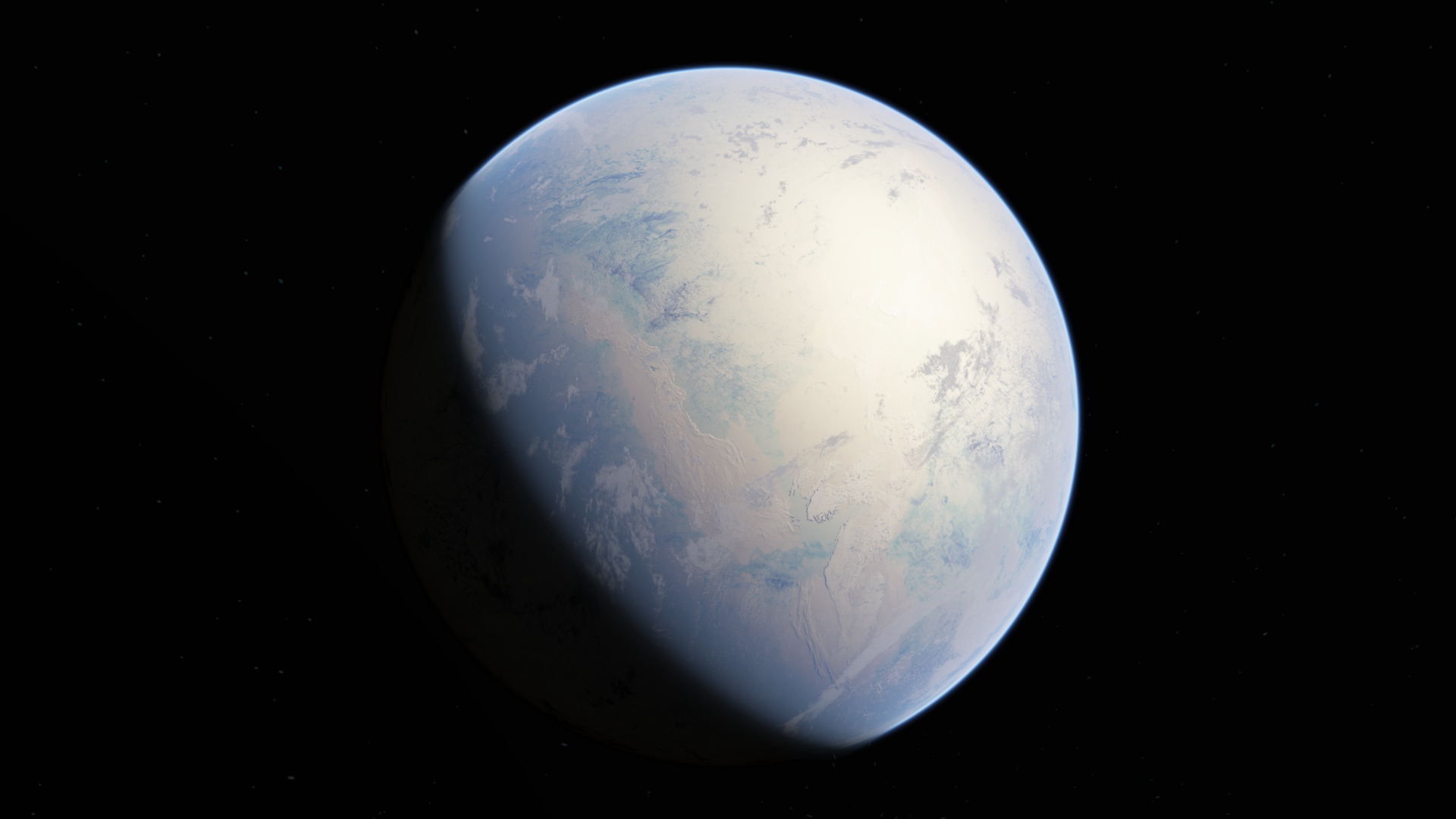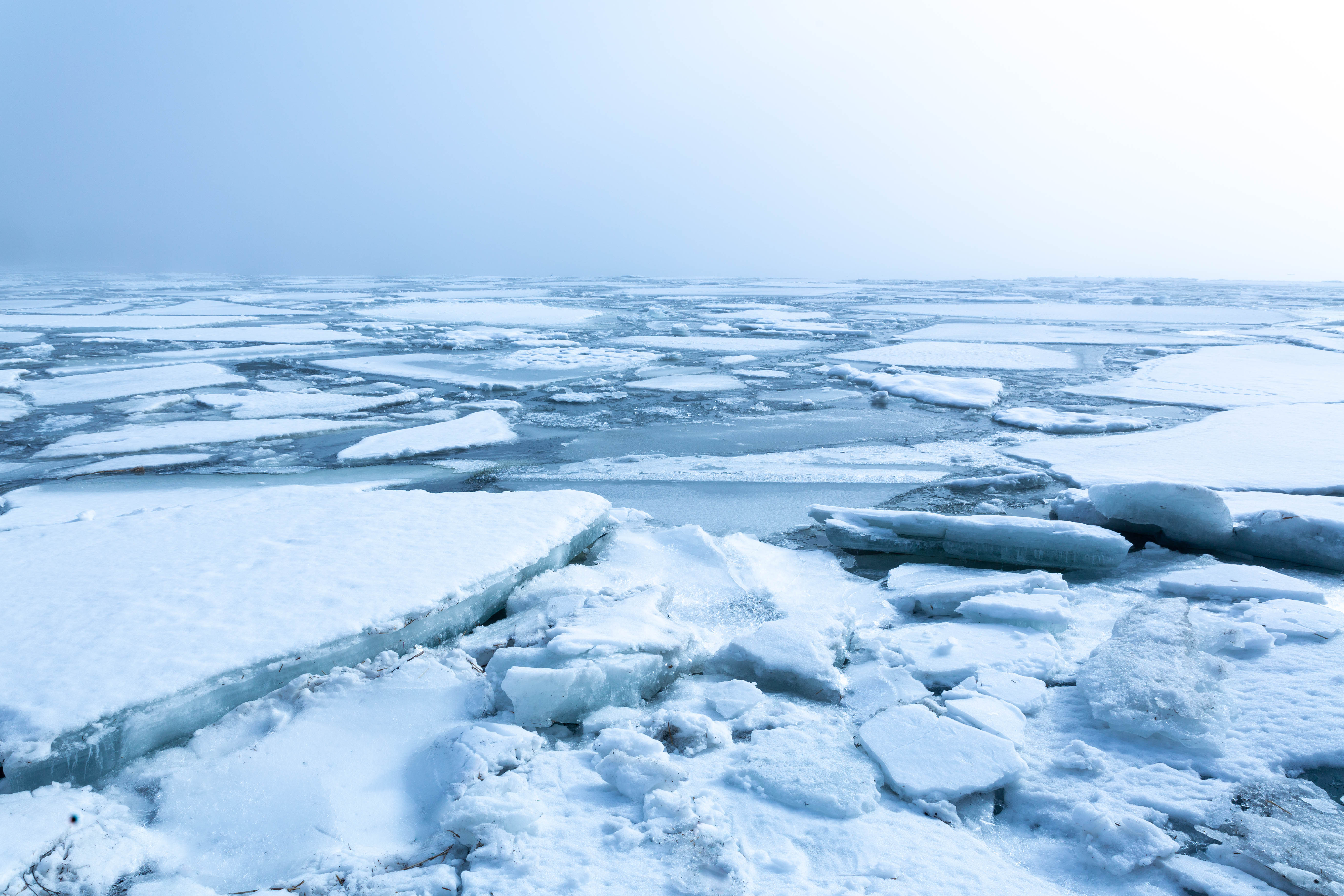'Snowball Earth' may have been more of a 'slushball,' providing a refuge for early life
Life may have survived in shallow liquid oceans during an extreme ice age around 650 million years ago.

650 million years ago, Earth was covered in ice during an "extreme" 15-million-year-long ice age. New research suggests that towards the end this period, Earth may not have been fully frozen, however. The findings suggest the planet was more "slushball Earth" than "Snowball Earth," with patches of open water existing in shallow mid-latitude seas. This slushball state could have actually helped life survive during this extreme glacial period on our planet.
Researchers made the discovery when studying samples from the eastern Shennongjia Forestry District of China's Hubei Province which dates back to the glacial period called the Marinoan glaciation, theorized to have ended between 628 million and 623 million years ago.
The Marinoan glaciation is is considered one of the most extreme ice ages Earth has experienced. "We called this ice age 'Snowball Earth. We believed that Earth had frozen over entirely during this long ice age," University of Cincinnati professor of geosciences, Thomas Algeo, said in a statement. "But maybe it was more of a 'Slushball Earth.'"
Related: How did Earth form?
This slushball Earth theory is based on evidence that Algeo and his colleagues discovered of a type of saltwater vegetation called benthic phototrophic macroalgae. This type of algae is found in black shale, a dark-colored, organic-rich sediment laid down in the geological record during various periods in Earth's history. This particular black shale dates back around 600 million years, coinciding with the Marinoan glaciation.
This type of algae lives at the bottom of oceans and survives through photosynthesis, which means it needs light from the sun to convert water and carbon dioxide into energy. Lead author and China University of Geosciences researcher Huyue Song said while deep water likely did not contain oxygen to support life during this period, the shallow seas did.
This indicates that habitable ocean conditions may have been more extensive than previously thought, and extended into oceans between the tropics and the polar regions. Life in the form of single-celled and multi-celled organisms could have sheltered in these open oceans as the Earth thawed at the end of the Marinoan ice age.
Get the Space.com Newsletter
Breaking space news, the latest updates on rocket launches, skywatching events and more!

"We present a new Snowball Earth model in which open waters existed in both low- and mid-latitude oceans," Song said, adding that the Marinoan would have been punctuated with periods of melting and freezing and life could have persisted during this 15 million-year or so period.
"We found that the Marinoan glaciation was dynamic. There may have existed potential open-water conditions in the low and middle latitudes several times," Song added. "In addition, these conditions in surface waters may have been more widespread and more sustainable than previously thought and may have allowed a rapid rebound of the biosphere after the Marinoan Snowball Earth."
Algeo added that these refuges for life may have actually helped Earth warm and bring an end to the Marinoan Ice Age. This is because algae in the water would have released carbon dioxide, and this greenhouse gas would have then trapped heat that thawed glaciers.
"One of the general take-home messages is how much the biosphere can influence the carbon cycle and climate," Algeo said. "We know that carbon dioxide is one of the most important greenhouse gasses. So we see how changes in the carbon cycle have an impact on the global climate."
The research raises questions about Earth's other glacial periods, particularly its second, the Cryogenian Period, which lasted from 720 million to 635 million years ago when the Earth is believed to have completely frozen over.
"We don't know for sure what triggered these ice ages, but my suspicion is it was related to multicellular organisms that removed carbon from the atmosphere, leading to carbon burial and the cooling of the Earth," Algeo concluded. "Today, we're releasing carbon quickly in huge amounts and it is having a big impact on global climate."
The team's research is published in the journal Nature Communications.
Follow us on Twitter @Spacedotcom or on Facebook.
Join our Space Forums to keep talking space on the latest missions, night sky and more! And if you have a news tip, correction or comment, let us know at: community@space.com.

Robert Lea is a science journalist in the U.K. whose articles have been published in Physics World, New Scientist, Astronomy Magazine, All About Space, Newsweek and ZME Science. He also writes about science communication for Elsevier and the European Journal of Physics. Rob holds a bachelor of science degree in physics and astronomy from the U.K.’s Open University. Follow him on Twitter @sciencef1rst.
-
rod My notes. I did not see the Faint Young Sun problem discussed for Precambrian Earth in this report. From the 9-page PDF report: “The two global Snowball Earth events (i.e., the Sturtian and Marinoan ice ages) during the Cryogenian Period (720–635Ma) played a key role in the evolution of the Earth-life system1–5. During Cryogenian Period, the oceanic redox landscape was restructured6,7, and animals probably emerged3, highlighting the possible impact of this climatic event on the Earth’s biosphere8,9. The surface ocean is hypothesized to have been mostly or completely frozen during this glacial event1,10, but alternative climate models and sedimentary evidence indicate the presence of open marine waters in low-latitude regions during the Snowball glaciations11–16."Reply
The Faint Young Sun problem remains to be solved for the Precambrian timescale in geology. Mars should experience an even colder climate. The Earth 4 Gyr, 3 Gyr, 2 Gyr ago should be frozen completely, not just Cryogenian Period with the Marinoan Ice Age or another. This should raise real concerns about how Precambrian tiny life evolved into the Cambrian explosion fossils documented. A problem for Charles Darwin in the fossil record, a bigger problem now because of the Faint Young Sun (now snowball Earth), something Charles Darwin did not know about.









